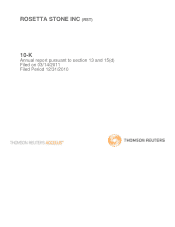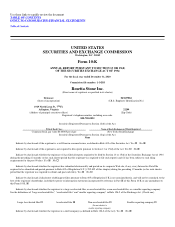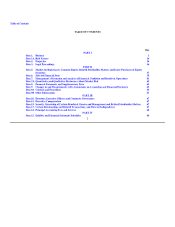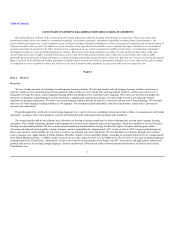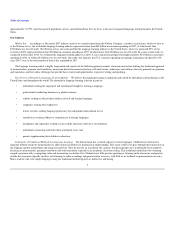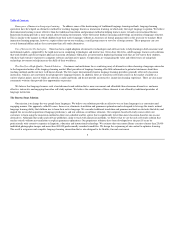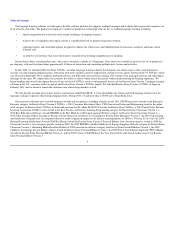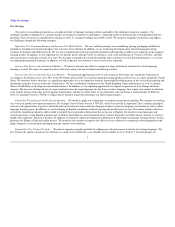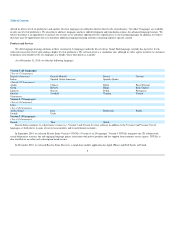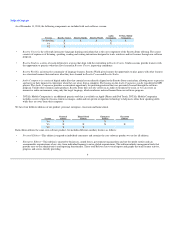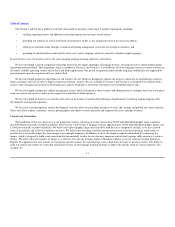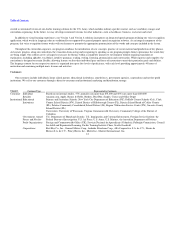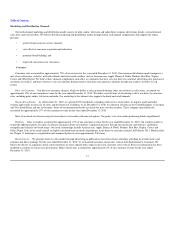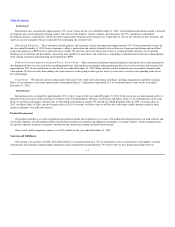Rosetta Stone 2010 Annual Report Download - page 6
Download and view the complete annual report
Please find page 6 of the 2010 Rosetta Stone annual report below. You can navigate through the pages in the report by either clicking on the pages listed below, or by using the keyword search tool below to find specific information within the annual report.
Table of Contents
approximately 74-79%, based on general population surveys and confirmed that Rosetta Stone is the most recognized language learning brand in the United
States.
Our Industry
Market Size. According to a December 2007 industry analysis we commissioned from the Nielsen Company, a market research firm, which we refer to
as the Nielsen survey, the worldwide language learning industry represented more than $83 billion in consumer spending in 2007, of which more than
$32 billion was for self-study. The Nielsen survey also estimated that the language learning industry in the United States, where we generated 92% of our
revenue in 2009, represented more than $5 billion in consumer spending in 2007, of which more than $2 billion was for self-study. In a more recent study we
conducted in December 2010, we estimated the language learning industry in the U.S. has contracted and represented approximately $4.0 billion in consumer
spending in 2010, of which $2.2 billion was for self-study. Our study also indicates that U.S. consumer spending on language learning has declined by 24%
since 2007, even as the total number of buyers has expanded by 28%.
The language learning market is highly fragmented and consists of the following primary models: classroom instruction utilizing the traditional approach
of memorization, grammar and translation; immersion-based classroom instruction; self-study books, audio tapes and software that rely primarily on grammar
and translation; and free online offerings that provide basic content and opportunities to practice writing and speaking.
Key Drivers of Demand in Language Learning Market. We believe that language learning is important and valued by individuals and institutions in the
United States and throughout the world. The demand for language learning is driven in part by:
individuals seeking the enjoyment and enrichment brought by learning a language;
professionals conducting business in a global economy;
schools seeking to educate their students in local and foreign languages;
companies training their employees;
leisure travelers seeking language proficiency for independent international travel;
armed forces training soldiers to communicate in foreign languages;
immigrants and expatriates seeking to successfully function in their new environments;
individuals connecting with their ethnic and family roots; and
parents supplementing their children's education.
Limitations of Traditional Methods for Language Learning. The human brain has a natural capacity to learn languages. Children learn their native
language without using rote memorization or adult analytical abilities for grammatical understanding. They learn at their own pace through their immersion in
the language spoken around them and using trial and error. They do not rely on translation. By contrast, foreign languages have traditionally been taught by
focusing on memorization, grammar translation and word translation, typically in an academic classroom setting. This traditional method involves learning
complex grammar rules, conjugating verbs and memorizing vocabulary lists. Students have little practice speaking or listening in the classroom, and practice
outside the classroom typically involves rote listening to audio recordings and pronunciation exercises, with little or no feedback on pronunciation accuracy.
Many students who were taught languages using the traditional method regard it as ineffective and boring.
4
•
•
•
•
•
•
•
•
•

